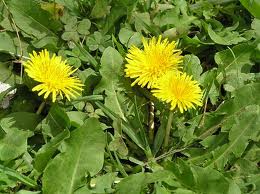|
T. officinale is the common and sometimes pesky, perennial weed in northern yards known as the Dandelion. The Dandelion (Also known as Swine's Snout, Priest's Crown and Telltime.) develops a deep, thick taproot from which a rosette of long, narrow, serrated, shiny dark green or brownish leaves arise. The hollow flower stalks grow directly from the root and each leafless stalk produces a single, golden yellow blossom, which produces an abundance of pollen and nectar. When the flower has reached its prime, it closes up and the dead petals fall off. Eventually the seeds mature and form snowy white puffballs, which will be blown off to be dispersed by the wind. The young Dandelion leaves, especially if blanched, can be used to make salads either alone or along with other salad greens; older leaves will be too bitter. The young leaves can also be boiled as a vegetable.
Pot Cultivation
Dandelions should be given rich, moist soil in a cool, sunny location. They need 4 to 6 inches of space in between each other. The young leaves should be picked early; before the flowering bud shows its head. Don't let the plants flower and go to seed or they will become pesky weeds. You can improve the flavor of greens cut in warm weather by storing them in the refrigerator for a few days. A plastic bag will reduce wilting from water loss. To blanch the leaves, invert a lightproof basket or box over the plants as soon as they start into growth, or, when the plants are about � grown, gather the leaves together loosely and tie them together so that the inner leaves are shaded.
Propagation
Seeds should be started indoors in peat pots in early spring or late summer in warm climates.
 |
T. officinale. |
Varieties
- T. officinale. Cultivated Dandelions are usually sold by the species name only or by a descriptive name such as "thick-leaved"
|